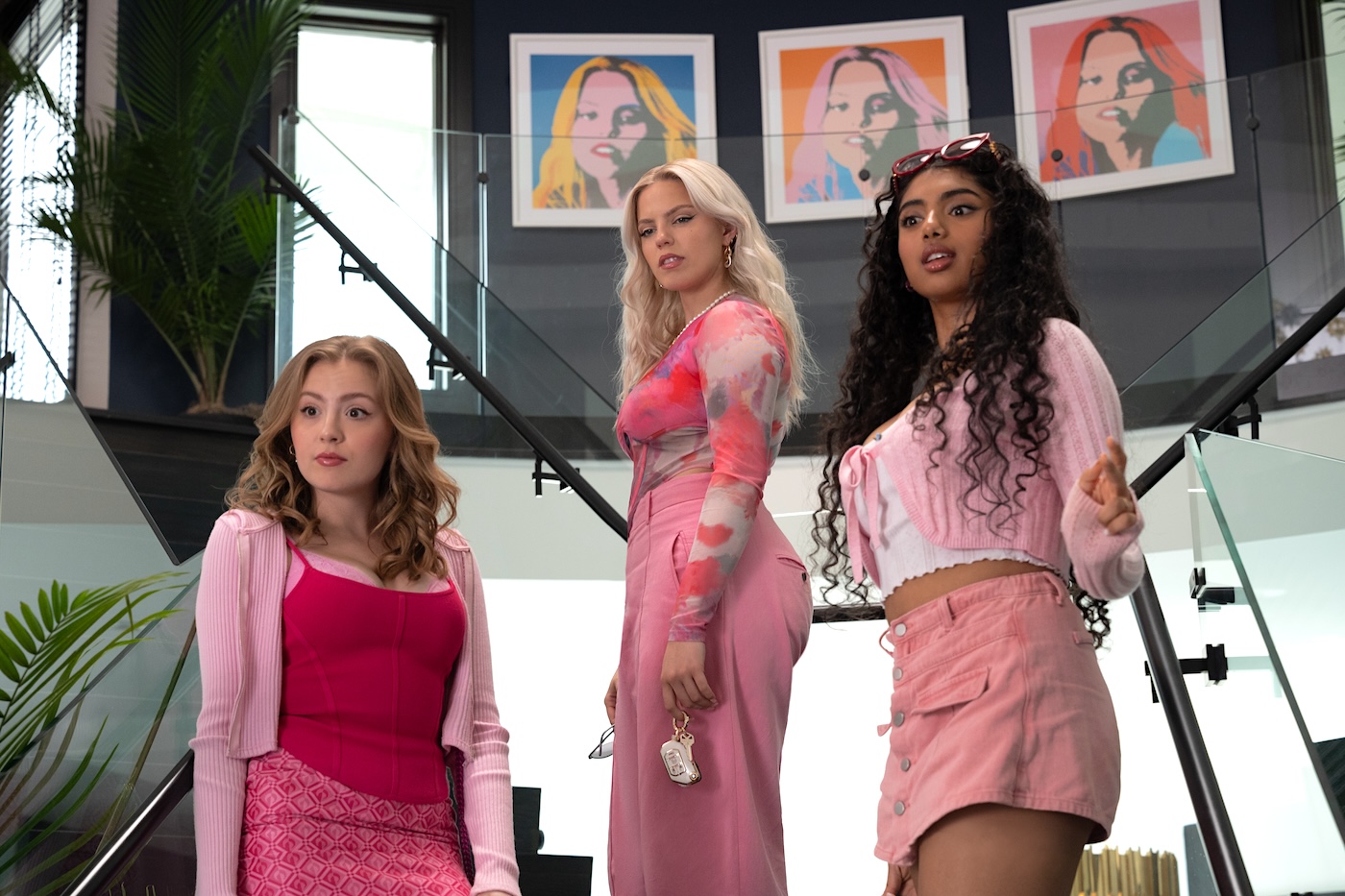A new feature version of the Broadway hit (and, before that, Hollywood box office smash) recently debuted on screens: head back to high school with Mean Girls (the musical).
by Pauline Rogers / Photos by JoJo Whilden/Paramount Pictures
Let’s face it: high school is war, and no one comes out unscathed. In 2004, film audiences were introduced to the Mark Waters-directed Hollywood smash hit Mean Girls, co-written by Tina Fey and based on Rosalind Wiseman’s 2002 book Queen Bees and Wannabes. Audiences (made up not just of teenage girls) connected with the story of naïve teenager Cady Heron, who after 12 years of being homeschooled in Africa by her research scientist parents, is dropped into the maelstrom of American high school life.
Cady befriends a group of outsiders that includes Janis Ian (yes, named after the singer) who holds a grudge against the all-girl clique “The Plastics,” led by Regina George, aka the Queen Bee of North Shore High School. Before too long, Janis talks Cady into infiltrating The Plastics (to take them down). At the same time, Cady begins failing math to get close to math legend Aaron Samuels. Her efforts to bring down The Plastics include tricking Regina into eating weight-gain bars and replacing her face cream with lard. Later, as Regina’s status plummets, Cady replaces her as Queen Bee, becoming “a full plastic” in Janis’ eyes. Other plot points include a teenage “burn book” that causes school-wide havoc, and rumors upon rumors run amok, all making up a soapy, silly and relatable box-office hit.
Paramount Pictures’ original film spawned a made-for-TV sequel, Mean Girls 2, a Broadway musical, and now in a full-circle meta moment that only the movie industry can produce, a new feature film interpretation of the Broadway musical, which was nominated for 12 Tony Awards. Paramount’s Mean Girls (2024, the musical) is written and produced by Tina Fey, and produced by Lorne Michaels, who also produced the 2004 feature. First-time directors Arturo Perez Jr. and Samantha Jayne were brought in to adapt the stage version to the screen, which has plenty of non-stop action and comedy.
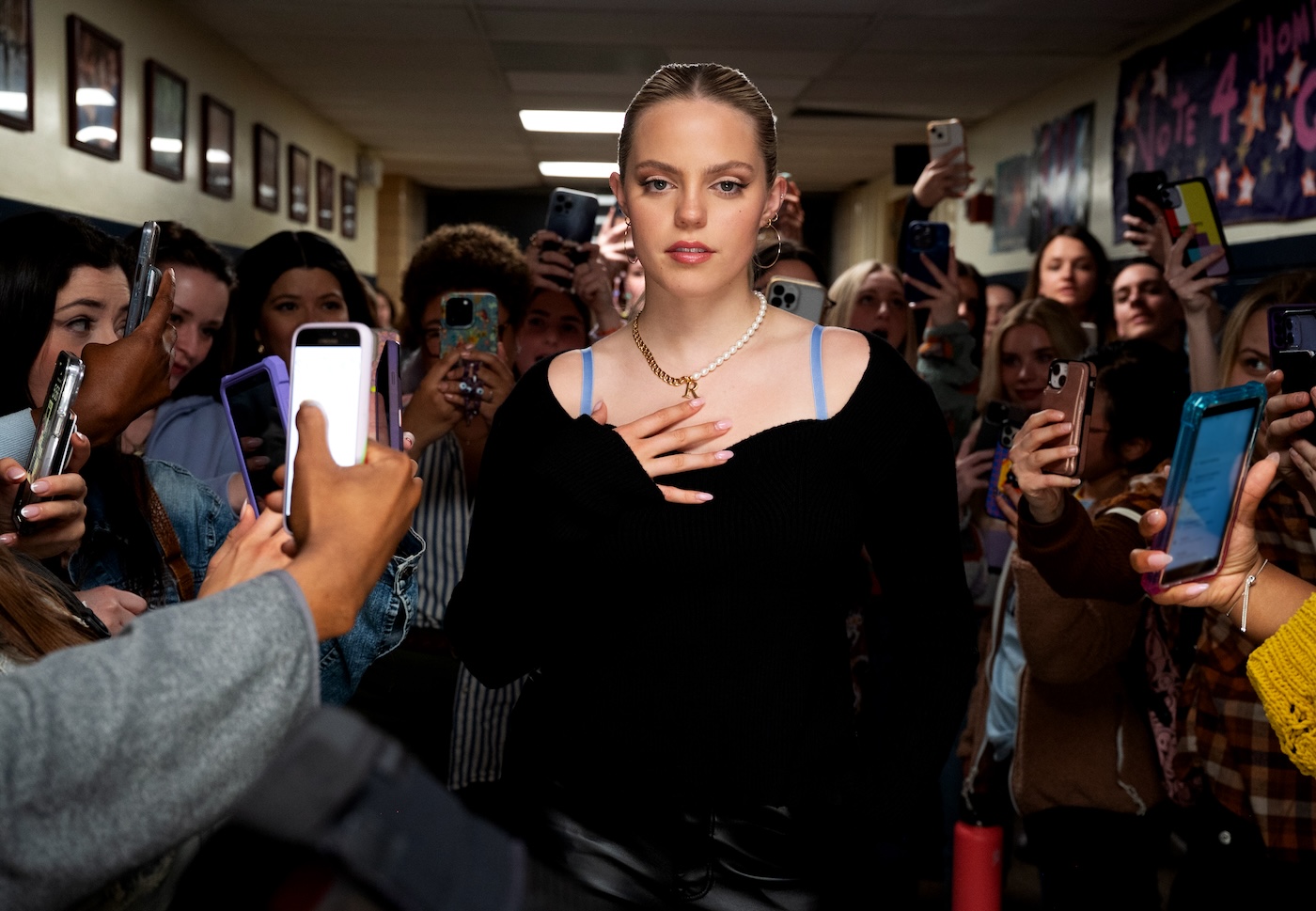
With the switch from stage to screen, songs were trimmed, choreography was changed, and sets were created that could accommodate the story’s many wild and crazy elements. The updated case includes Angourie Rice as Cady (in the role made famous by Lindsay Lohan in the original), Auli’i Cravalho as Janis and Renee Rapp as Regina (originally played by Rachel McAdams). As Director of Photography Bill Kirstein (who worked with Perez on a Justin Timberlake video) describes: “We had to use every available cinematic technique at different moments to make the style fit the emotion of each scene. This meant using long takes, Steadicam, a Trinity rig, slow motion, zoom lenses, programmed lighting changes, real locations and different aspect ratios.”
Kirstein says a deep-focus look was chosen because “we were shooting all on location and wanted the texture of the lived-in environment,” he adds. “Most of the film was shot between a T5.6 and T8 because we wanted to see how the characters were affected by the world around them. Deep focus also showcased the work of Production Designer Kelly McGehee. From sets to posters, books, murals, furniture and art supplies, Kelly made sure everything on screen added a beautiful layer of specificity and reinforced the emotion Sam and Art were going for.”
The team all agreed simulating the look and texture of film would be a key addition, so, in prep, Kirstein and DIT Gabriel Kolodny tested custom LUT’s with Harbor Picture Company Colorist Damien Vandercruyssen to see how best to use the ALEXA 35 sensor. They ended up rating the camera at 1600 ISO, with the custom LUT pushing that 1-2/3rd stop further. Kirstein says that approach, “combined with our high f-stop, grain, and Damien’s film look in post, gave us the final image we were looking for.”
Kolodny says testing first with Vandercruyssen “was critical to achieving the look we wanted. Being able to sit together to review the nature and quality of the lenses, how all of this comes together, with our exposure technique, our pushed LUT and on-set color correction, helped us create a solid plan.” Another decision that upped the challenge (and on-set creativity) was the decision to see 360 degrees in most locations. Kirstein and Chief Lighting Technician Andy Day worked with McGehee to incorporate controllable practical lighting into each location. Key Grip Richard Guinness Jr., Rigging Gaffer Matt Hale, and Rigging Grip Bill Kerwick were equally creative in rigging lights and diffusion into ceilings, on rooftops, and using lifts so that they could still light while seeing in every direction.
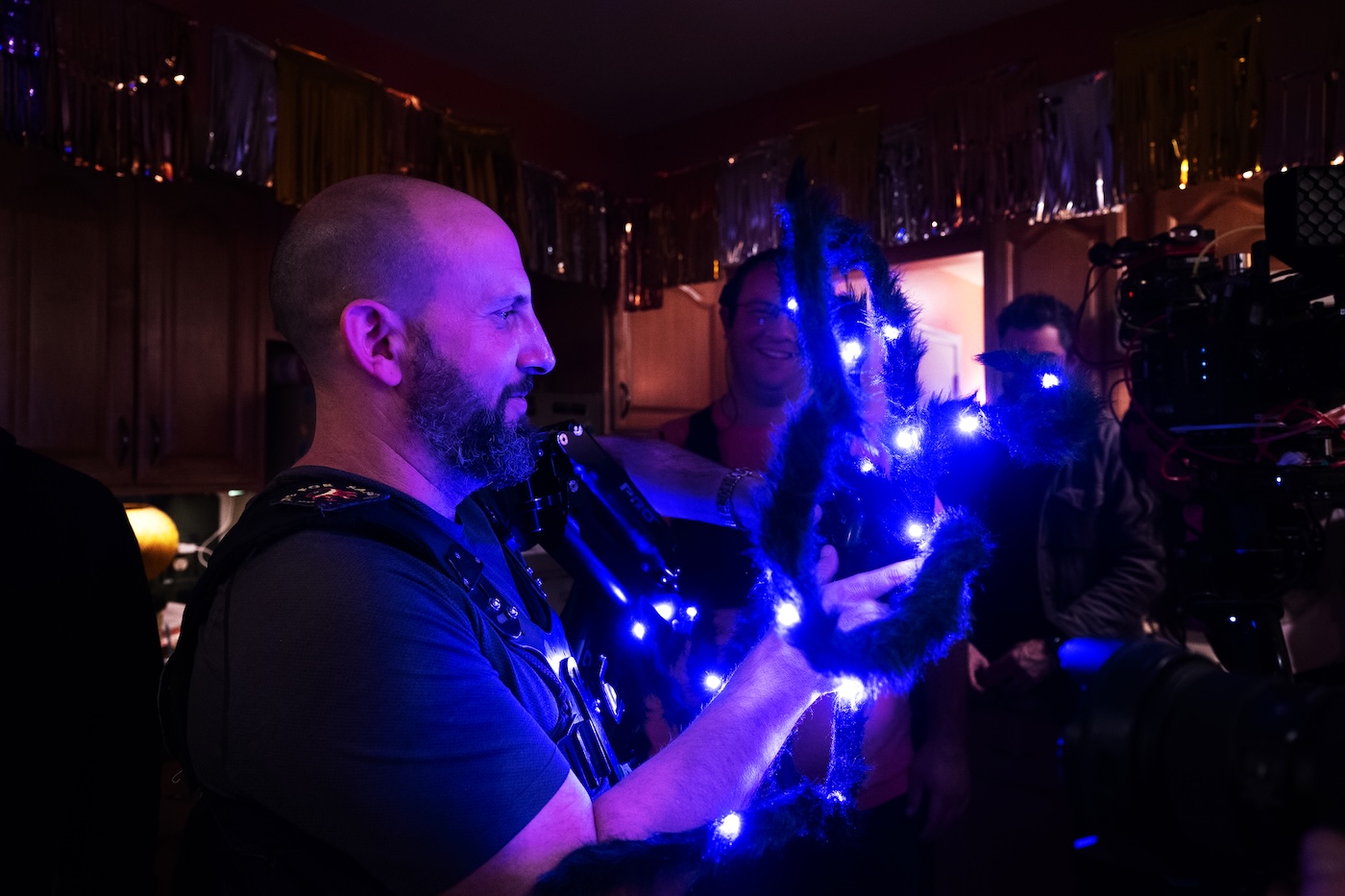
With a short shooting schedule and a modest budget, pre-visualizing all the many song-and-dance numbers was imperative. Local 600 Camera Operator Ari Robbins, SOC, [ICG Magazine December 2016] was brought in five weeks before pre-production to work with the two directors and decide what support gear was best for each visual challenge. “We needed to figure out where the Steadicam would work, or where we could use the Trinity or 75-foot Techno,” Robbins explains. “For me, a big part of the testing was determining what would be needed to achieve the shot physically and what would ultimately enrich the story. For ‘I’d Rather Be Me,’ we examined whether the whole shot was too long for Steadicam/Trinity and whether handheld/gimbal was the best choice. We tried the handheld because it provided the intimacy we wanted but was frenetic for the details. Ultimately, we found Steadicam was best, and then we had the prep time to be able to work out the challenges way ahead of shooting.”
Robbins says they came to a similar decision with the “Sexy” number. As he continues: “We wanted to use the Trinity because of its ability to boom high and low. But that also gave us less accuracy in other parts of the shot due to space, and we didn’t want to make that sacrifice as it would have limited the actors. Testing ahead with the cast allowed us to make better use of our time on set with the demands of time and schedule.”
Even more testing was done in prep to find the best lenses for the job – the right mix of spherical, anamorphic and zoom lenses. “We were looking for glass that would feel three-dimensional at higher f-stops without being too sharp or clinical,” Kirstein imparts.
First AC Eric Swanek adds that since Kirstein was shooting with the ARRI 35, capturing at 4K in 1.85 with a 4.6K Open Gate for possible stabilization, “the Cooke S4 Primes and Angénieux zooms were the best fit. We also chose Cooke 20-60 and 20-100 zooms. After testing, we chose to shoot the musical sequences in 3.3K 2:1 Squeeze 2.40 using vintage Todd AO anamorphic primes as well as a Hawk 46-230 and 45-90.”
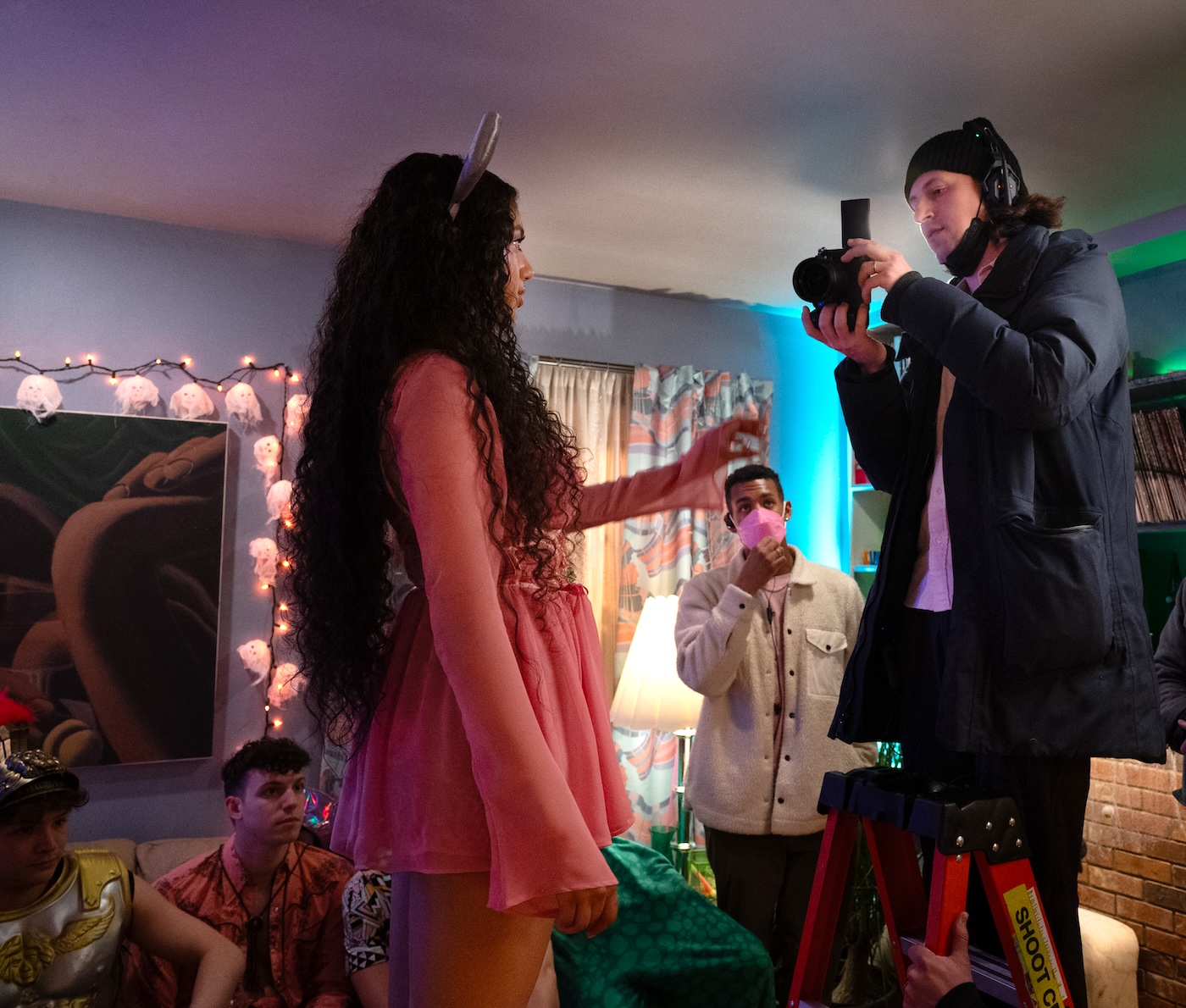
The team also did camera and lighting tests for specific moments. “The film’s opening shot transitions from a vertical aspect ratio, pushing out of the garage and transforming into 2.39,” Kirstein recalls. “Art and Sam wanted to do this shot practically and in real locations. So, we tested extensively with Ari on the Trinity. Eric Swanek and [2nd AC] Tyler [Swanek] were able to build custom frame lines for this shot. Ari, Richard Guinness Jr. and Dolly Grip Joe Belschner figured out how to rig the Trinity in a way that allowed Ari to transition seamlessly from a lock-off shot to moving through the garage and out into Kenya.”
The second half of the shot required Robbins and Kirstein to step on an e-car hidden by McGehee’s greens team. “The car (driven by Dave Conelli) had to pick Ari up at just the right moment to avoid being seen in the frame and allow us to track Cady’s run to the tent,” Kirstein continues. “There would be no time to figure this out on the day, so we took measurements at the Kenya location and then built a test run on a soccer field at our main school location. When it came time to shoot the sequence, we did almost exactly what we had practiced.”
One of the most complicated sequences was inside the Halloween House – small, crowded and full of energy. Kirstein says lighting for the number “Someone Gets Hurt” and camera movement for Karen Shetty’s (Avantika) “Sexy” dance sequence had to be extensively thought out. “It was a small practical location with 750 square feet of shooting space and eight-foot ceilings. We wanted to find the specific lighting colors that worked for the song, and ensure the lights would change properly on time-coded cues,” he shares. “Knowing that we had one day to shoot, this test became our only time to program and work out the kinks. Andy and Gabriel [Kolodny] worked with Lighting Board Operator Gary Wilkins to dial in the looks, so we had a strong jumping-off point when we came back to shoot that sequence four weeks later.”
“Everyone had an interesting challenge on that shot,” adds Eric Swanek. “Andy hid lights in a small house and made it look crazy. Richie had engineers reinforce the floor for the dancers and cameras. We were helped by the ALEXA 35’s ability to cleanly shoot at 1600 for 48 frames per second and with a 144-degree shutter for parts of the song. We used traditional A and B Cameras and Steadicam, transitioning from spherical Cooke S4 lenses to vintage Todd AO anamorphics once we tilt down to the MIDI-sequencer and the music starts. Our fantastic dolly grip, Joe Belschner, guided (and occasionally carried) Ari through it all flawlessly.”
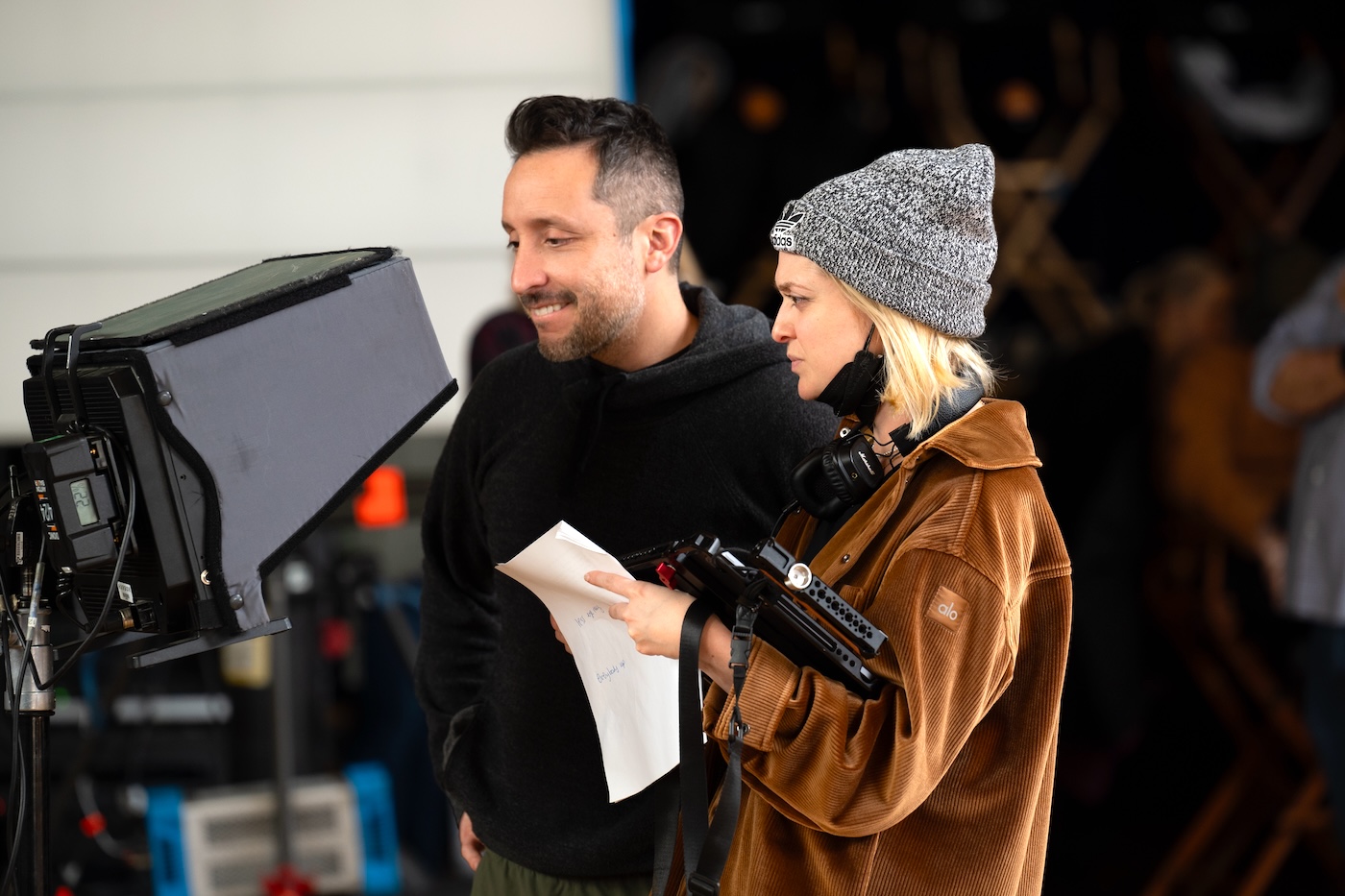
The most interesting shots from the camera team’s perspective start with the powerful “Meet the Plastics,” when Cady first sees Regina, and the directors want the film to enter a subjective reality. “The culmination of this sequence is a ‘double zolly’ shot to give the audience the feeling of Cady being sucked towards Regina,” Kirstein describes. “We accomplished this by starting the camera far away from Cady on a long lens and then moving the camera towards Cady while zooming out – a typical Zolly shot. We also put Cady on a dolly and moved her towards the camera simultaneously to intensify the feeling of inexorable attraction to Regina. This sequence required perfect coordination between lighting, grip and camera to land the shot.”
Likewise the first musical sequence, “Sexy,” required many seamless transitions. “It opens with a 40-millimeter medium shot of Regina reacting to the scene we’ve just been watching,” Kirstein explains. “Karen bursts into the frame and picks up singing ‘Sexy.’ Ari led her throughout the house on Steadicam. I used the Preston Radio Micro Force to zoom-out remotely to 15 millimeters. Ari and Avantika dance through the entire first floor of the house in an unbroken take for the rest of the song. We choreographed the shot during prep, and I worked closely with Andy and Kelly to install practical lights throughout the house where we could light our characters and still avoid camera shadow. Andy also placed a small light on Ari’s Steadicam that could be remotely dimmed up for a few key moments when Avantika wasn’t near our practical lights.”
Another cool visual moment in the song was “Dance Break,” where the team wanted to incorporate theatrical stage lighting. “These lights were built into the set and programmed to timecode sent by our playback operator Igor to Gary on the lighting board,” Kirstein says. “One of the biggest challenges was that we were in a 750-square-foot room with eight-foot ceilings, and both Ari and our actors had to hit their marks down to the inch.”
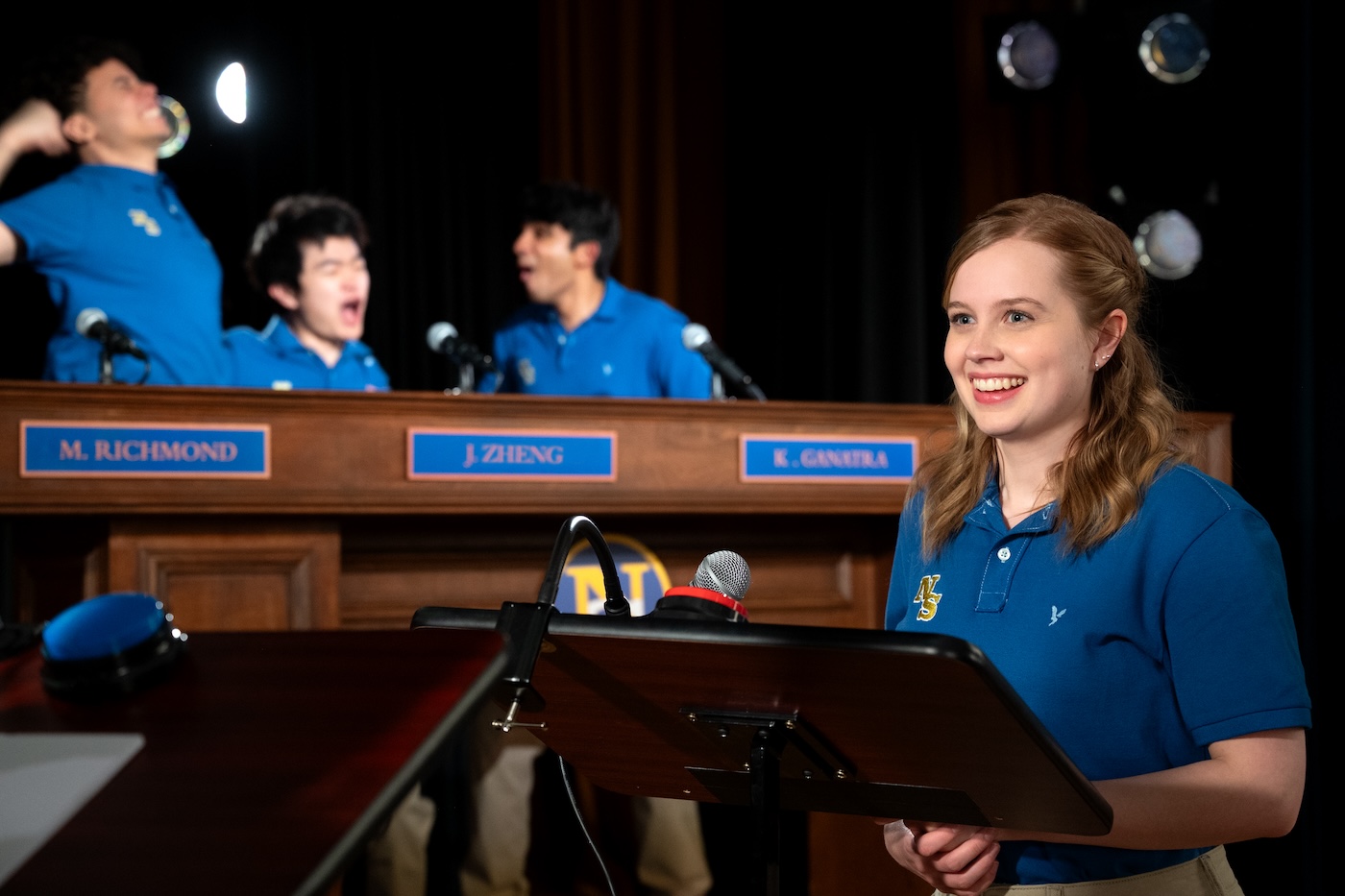
All agree that one of the most complex sequences was the aforementioned “Someone Gets Hurt.” Kirstein shot the sequence three times during prep with the directors and choreographer Kyle Hanagami. “We refined our plan each time, knowing that we had only one day to shoot and 31 setups,” he elaborates. “We again needed to transition seamlessly from a scene into a musical sequence. We had Ari follow Aaron and Regina (Reneé Rapp) through the house on Steadicam and track straight into a button pressed on a MIDI sequencer. The lights go out, and the frame changes from 1.85 to 2.39. Everyone at the party freezes in place except for Aaron and Regina.”
Kirstein says the goal was “an icy, mysterious feeling and, after testing in prep, we found that a cold cyan light gave us that look.” Once again, Kirstein and Day worked together to position LED lights around the house – hidden mainly by dancers. They then had two electrics with handheld LED’s that could light Regina and Aaron while staying out of the shot.
“Throughout this sequence, the lights transition from our dark, frozen look to an earthquake look, where lights start strobing on a timecode cue,” Kirstein continues. “This is followed by what we call Renaissance Mountain, where the dancers worship Regina as she almost glows with a bright amber warmth. The shot was inspired by Robby Muller’s fantastic cinematography in Wim Wenders’ The American Friend and Until the End of the World.”
Once the scene transitions back into the earthquake lighting cues, Kirstein says “it had to be timed with wind and shooting at 48 frames per second for the song’s finale. Reneé Rapp had to sing double speed for this section to make the lip-sync work while all the lights remained tied to the timecode,” he reveals. “Richard Guinness tented the house and ensured that those tents were big enough that we could send ‘streetlight’ in from outside and have it look natural. Andy [Day] put programmable moving lights in the tent to give the feeling of car headlights driving by that would light the actors and flare the lens during specific setups.”

For the musical sequence “World Burn,” two central locations were used: Regina’s house/bedroom and North Shore High. The creative team chose red for this sequence to represent the conflict Regina is setting in motion. It begins with a difficult Trinity shot, which opens on a large photograph of lips, tracks around the corner, enters Regina’s room, and tracks into a closeup of Regina singing in a small circular mirror. “Once again, we built stylized lighting into the set, mixing LED tubes and light ribbon to create a red silhouette look for Regina’s room,” Kirstein recalls. “Eric did incredible focus work, keeping Regina sharp in the mirror as we pushed in.”
Once the sequence moved into the high school, the action was centered in one of the hallways, for which Day replaced ceiling fixtures with custom LED tube light boxes. Wilkins programmed a series of strobes, flickers, red looks and red/white light chases that supported the shot’s feeling of danger and chaos. Robbins used the Trinity to do a 360-degree camera rotation while pushing through groups of fighting students, which transitioned from the musical 2.39 aspect ratio back to a total of 1.85. Kirstein shares that “we rarely had enough time to program, so Andy had to divide up responsibilities so that Gary could work on programming lighting cues for the next day’s work. After we finished shooting, we would review the cues and make any adjustments before we had to shoot the next day.”
One of the film’s high points is the song “I’d Rather Be Me” – another Steadicam oner from Robbins, who had to run full speed through the cafeteria while hitting precise marks and frames. Kirstein says that because “we see 360 throughout, we installed additional practical lighting in the lunchroom and hid other small units wherever we could. The shot continues from inside to outside, which required a six-stop iris pull from Gabriel Kolodny.”
As per the source material, the union camera, grip, and lighting teams had a lot of fun revisiting high school life. Just ask Ari Robbins about when Dolly Grip Belschner (aka “Mountain Man”) decided that protecting his operator’s flank – and getting a great shot – worked much better if he picked Robbins up and carried him backward. Everyone wishes they had a picture of Robbins’ legs still walking – on air – as he concentrated on the shot. Or when Eric Swanek and his son Tyler led the charge, urging all crew members to wear pink on Wednesdays (a dictum put forth by The Plastics in the story).
Good times aside, Kirstein says the latest version of Mean Girls required incredible commitment and coordination between every crewmember. “We were always short on time, but Andy, Richie, Eric, and 1st AD Colin MacLellan continually made sure they were looking ahead so that we were always prepared,” the DP concludes. “Besides their experience, one of our biggest assets was having our board operator, Gary, control almost every fixture on set. This meant we were able to change things quickly on-the-fly and respond to new ideas in real time. Likewise, Ari Robbins’ skill and flexibility on A-camera/Steadicam meant we could often nail shots quickly, try different versions, and capture ephemeral moments. Even at the most difficult times, the crew made this film a joy to work on.”
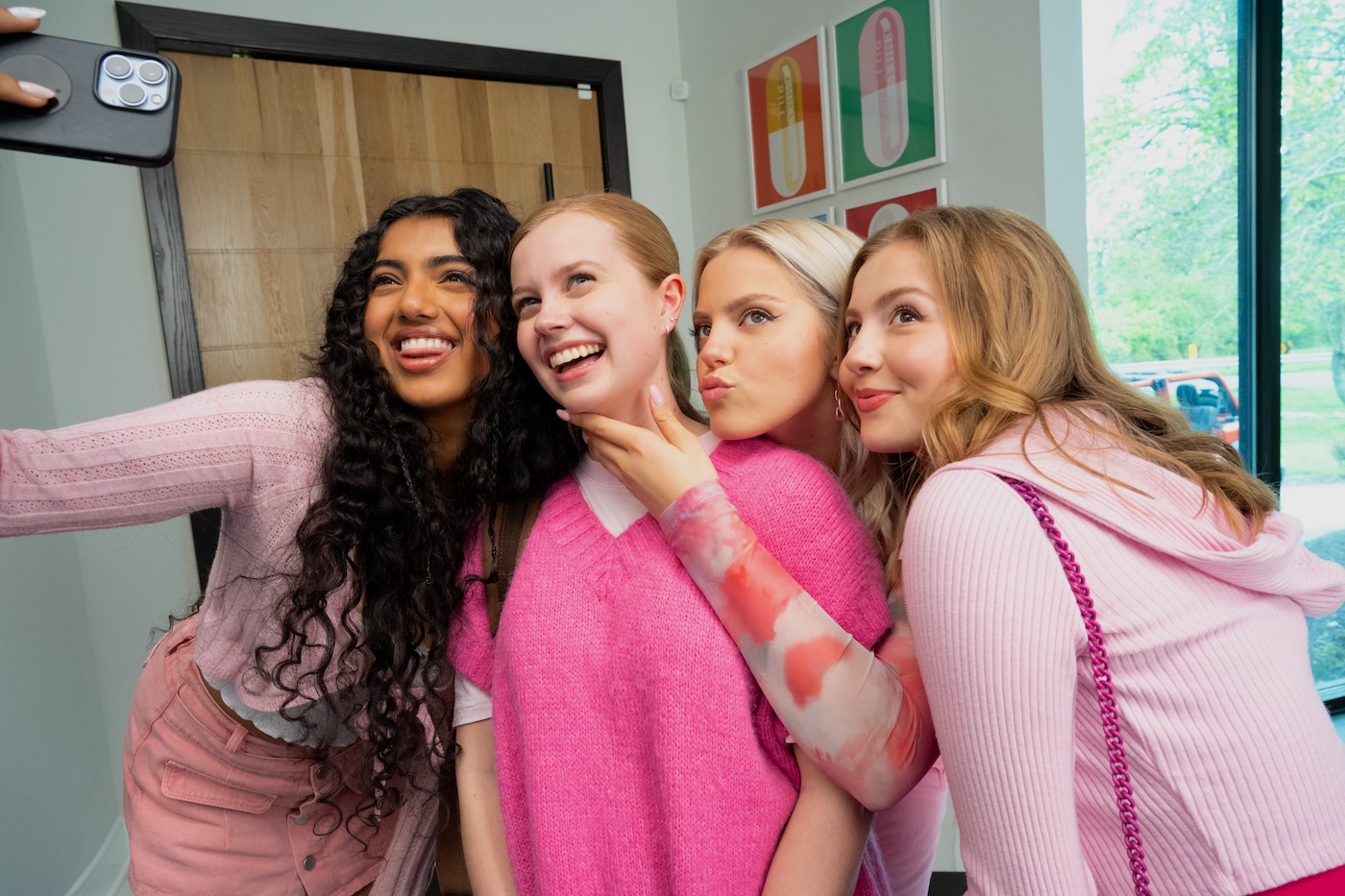
Mean Girls – Local 600 Crew
Director of Photography: Bill Kirstein
A-Camera/Trinity Operator: Ari Robbins, SOC
A-Camera 1st AC: Eric Swanek
A-Camera 2nd AC: Tyler Swanek
B-Camera Operator: Brian Johnson
B-Camera 1st AC: Andy Peck
B-Camera 2nd AC: Carrie Wills
C-Camera Operator: Anne Carson
DIT: Gabriel Kolodny
Loader: Sam Fornasiero
Unit Stills Photographer: JoJo Whilden
Additional Photography
Director of Photography: Bill Kirstein
A-Camera Operator: Brian Freesh
A-Camera 1st AC: Elliot Barnes
A-Camera 2nd AC: Sarah Takizawa
B-Camera Operator: Sarah Levy
B-Camera 2nd AC: Ben Palmer
DIT: Rohan Chitraker
DIT: Cavin Reibman
Digital Utility: Zach Madden
Digital Utility: Will Hecht
